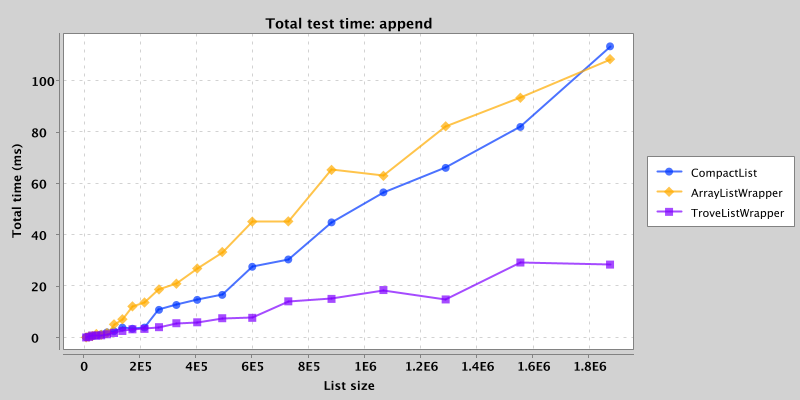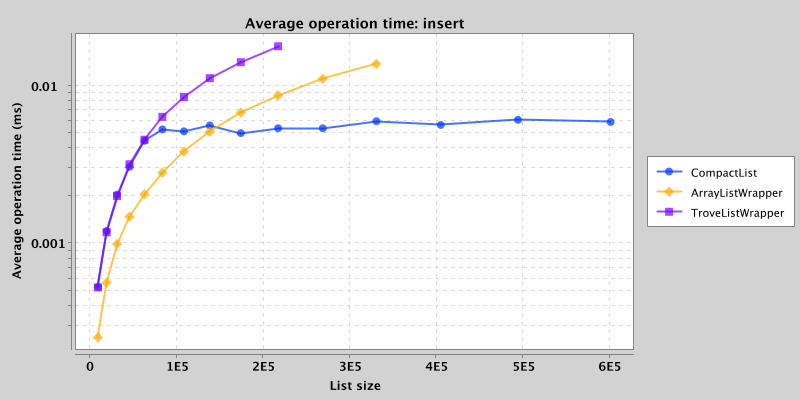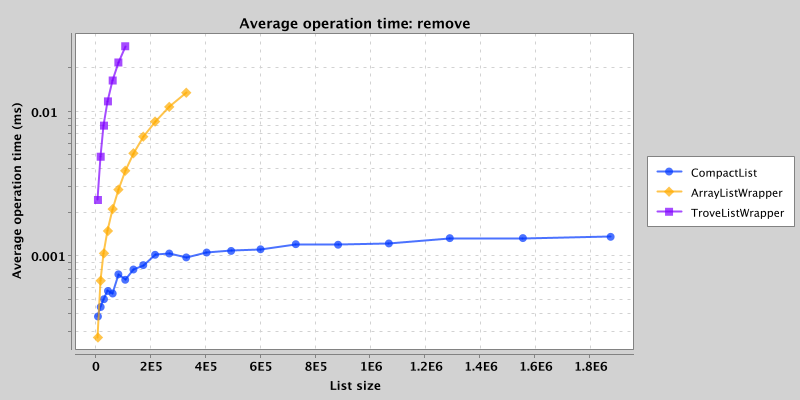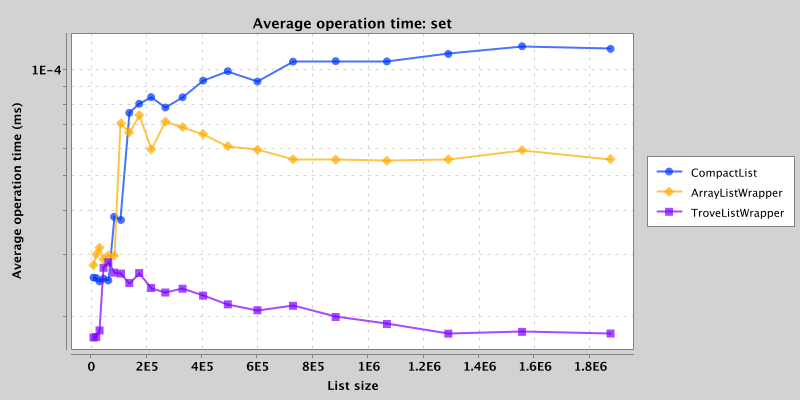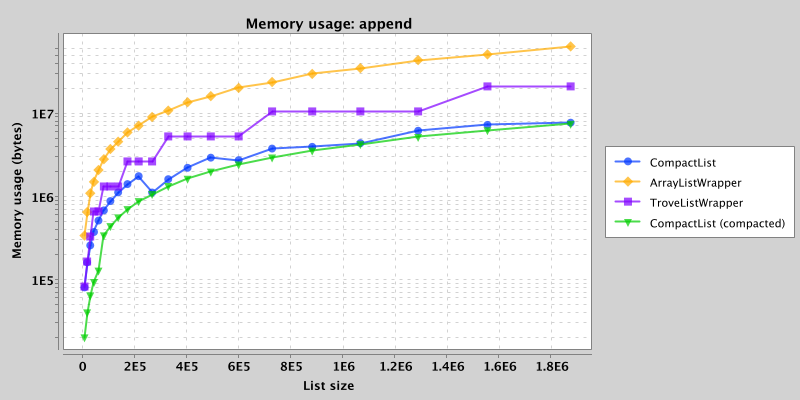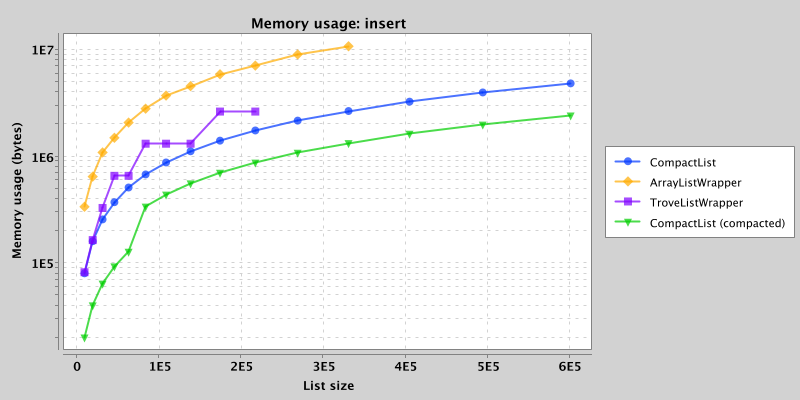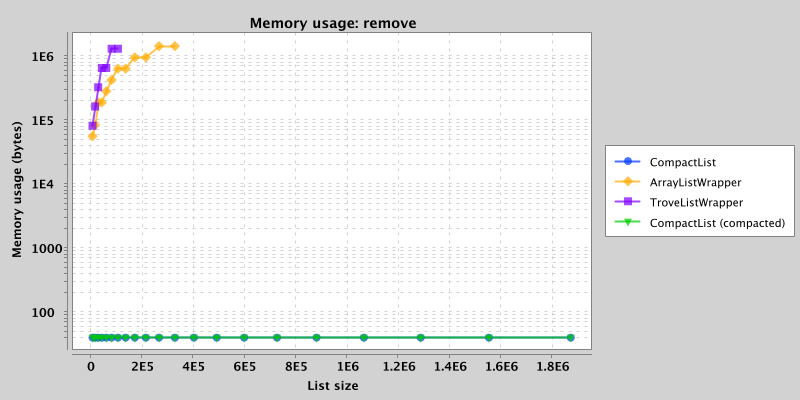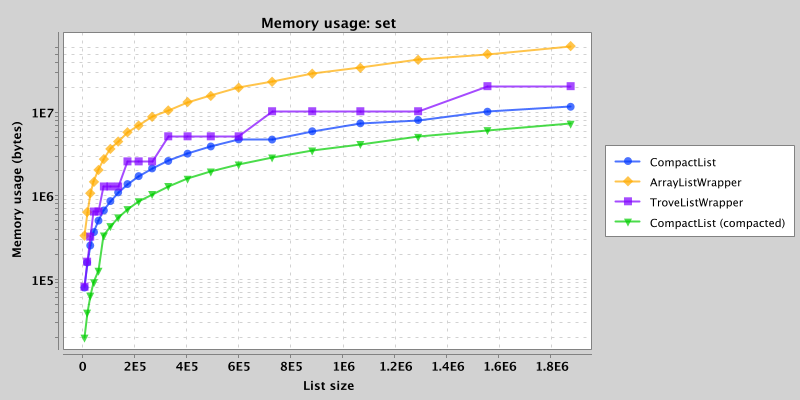CompactList implements the List<Long> interface, but internally it uses a tree of variable word-width segments to improve
performance and memory usage compared to an ArrayList.
Similar primitive container implementations can be found elsewhere, notably:
This project is published to Maven Central via Sonatype OSSRH
<dependency>
<groupId>net.kothar</groupId>
<artifactId>compactlist</artifactId>
<version>0.4.2</version>
</dependency>
Performance of CompactList tends to be worse than ArrayList for small lists, but gains an advantage
for random inserts as list size increases. This is mainly due to the tree structure which limits the
amount of memory that needs to be copied when elements are inserted or removed, or the allocated backing
array is grown during an append.
The implementation currently splits segments at 2^16 elements, which is where performance gains for insertion start to appear.
In the charts below, CompactList beats ArrayList when inserting ~2^17 or more elements.
Benchmarks were run on a 2.2 GHz Intel Core i7 running MacOS 12.0.1 and AdoptOpenJDK 11.0.11
mvn exec:exec will run the benchmarks.
This benchmark appends sequential values to the end of the list.
This benchmark inserts sequential values at random locations as the list grows
This benchmark creates a list of sequential values by appending, then removes elements at random indices until the list is empty.
This benchmark creates a list of sequential values by appending, then sets elements at random indices a number of times equal to the size of the list.
Memory usage depends on how regular the data is, since more regular data can be stored with fewer bits. As a baseline,
non-compacted CompactLists on a 64-bit JVM use roughly one third of the memory of an ArrayList<Long>
(8 bytes per value vs 4 byte pointer + 24 byte Long object per value). Memory usage after compaction
is close to the underlying storage size for the smallest word width capable of storing the range of values in each segment.
CompactList handles regular data such as repeated or ascending values extremely well.
Storage strategies are implemented for word widths of 64, 32, 16, 8, 4 and 0 (constant value).
Lists can be compacted manually by calling CompactList.compact().
When compacting, several strategies are attempted to reduce the storage size needed:
Offset will attempt to add an offset to each value, shifting the zero-point to the middle of the range of values stored in the current block.
